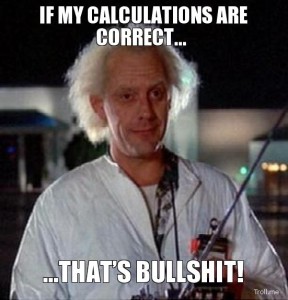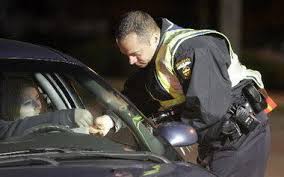
Urine test positive for THC?
This last week I had the opportunity to “pinch hit” in a jury trial. My job was to cross examine the State’s 3 toxicology witnesses. If you just read the police reports, you would think that the prosecution was walking into a “slam dunk” type of a case. You had an individual who submitted to an Intoxilyzer 8000 breath test and blew a .074. While right under the legal limit of .08, the client purportedly admitted to having “just smoked a bowl of weed” when he was asked to submit to a urine test. So the State decided to take the case to trial based on the poor driving pattern, bad roadsides(defendant is physically handicapped) and low breath combined with an admission of drug use. It was critical for the state to establish that the defendant was under the influence of marijuana at the time when he was driving the car since the breath was below a .08. The state called 1 chemist and 2 forensic toxicologists in an effort to do just that.
Initially, I would like to thank Gary Ostrow and Melanie Batdorf for allowing me to co-counsel on this case. They did a fantastic job handling the case and set me up for a great shot. So I give all credit to them for the heavy lifting.
Witness I, Laboratory Chemist | Not an Expert Witness
The first witness for the State was an individual with a bachelor’s degree in Chemistry with over 30 years of forensic science laboratory experience. The state did not offer her as an expert. She testified that she conducted a test on the urine sample provided by the defendant which is known as an “IA” or “immune assay” test. On while being questioned on direct examination by the State she testified that the urine sample provided by the Defendant tested “positive for THC.” THC is the principal psychoactive compound found in marijuana. While this answer is not an outright lie, it is certainly not the “whole truth” that witnesses are expected to provide.
On cross examination, I immediately asked the witness if the test she performed detected the presence of THC, an active metabolite of THC or an inactive metabolite of THC. The answer to this question is crucial because if the state can prove THC or an active metabolite, the chance of a guilty verdict increases substantially. Only THC and its active(psychoactive) metabolites are controlled substances under Florida Statute Chapter 893. Accordingly, if the test only detect an inactive metabolite of THC, it is insufficient to prove impairment. The chemist with over 30 years laboratory experience stated that she did not know whether the test identified THC or another substance indicative or prior exposure to THC a/k/a as a metabolite. When I began to question her about the difference between active and inactive metabolites, she stated that I would have to ask her supervisor because she didn’t know. However, she did state that the manufacture’s box containing the test kit said THC on the outside of it.
It is disturbing that the chemist did not know what a “positive” result indicates.
Witness II, Forensic Chemist, Expert Witness
The second witness for the state was a forensic chemist who performed the GC/MS and TLC test on the urine sample. Again, on direct examination, the forensic chemist testified that the defendant tested positive for cannabis in the TLC test only. The state elicited more specific testimony wherein the witness stated that cannabis is the active substance in marijuana.
This witness was qualified as an expert witness. Accordingly, the first thing that I did was go back and determine what substance was detected by the prior IA test performed by the first witness. She testified that the IA test could not detect THC or any active metabolites in THC. Rather, she testified that the substance detected by the IA test was 11-nor-9-Carboxy-THC which is an inactive metabolite indicating prior exposure to THC. She went on to state that the TLC test was also incapable of detecting THC or active metabolites of THC. She conceded that the TLC test simply confirmed the presence of the inactive metabolite 11-nor-9-Carboxy-THC.
There were two key points to this cross examination that put the nail in the state’s proverbial coffin. First, she testified that there were no impairing substances detected by the laboratory. Second, the witness testified that the laboratory has the ability to detect the presence of THC and the active metabolites of THC, but they did not and do not perform the test necessary to do so.
Witness III, Forensic Chemist, Supervisor, Expert Witness
The third witness was the supervisor who signed off on the toxicology report. However, he did not perform any of the laboratory analysis. From the laboratory perspective, he was not a very useful witness from the state. However, having worked with him before, I knew that he was the most knowledgeable regarding the physical and mental effects of drug use.
Once again, this witness testified that the defendant tested positive for cannabis and did not differentiate between impairing substances and inactive substances. On cross, he too admitted that there were no psychoactive substances detected in the sample. He then went on to testify as to how to identify the impairing effects of cannabis and the proper use of a urine drug test in a DUI case. Unfortunately for the state, none of the indications of cannabis impairment were present in the video.
Summary of the Testimony
- All three witnesses for the state initially, on direct examination, testified that the defendant tested positive for an illegal, psychoactive chemical substance capable of causing impairment alone or in conjunction with alcohol;
- All three state witnesses changed their testimony on cross examination. One stated that she didn’t know what a positive result actually indicated. The second two witnesses admitted that the defendant did not test positive for any illegal and/or psychoactive chemical substances;
- There was nothing from the toxicology results that could indicate that the defendant was impaired by anything;
- At the very most, the state proved that the defendant MAY have been exposed to THC within a 30 day period prior to the day he was arrested for DUI.
Every Lie Contains Some Truth
11-nor-9-Carboxy-THC. is an inactive secondary metabolite of THC. When the inactive metabolite is detected in the urine, the is a high probability that an individual has been exposed to THC at some point prior to the test. So did the defendant test positive for THC? Obviously, the state’s answer is “kinda”, but my answer is no. There is a very big difference between testing positive for THC and testing positive for an inactive secondary metabolite of THC. One is a controlled substance under Chapter 893 Florida Statutes. The other is not. The controlled substance can be used as a basis for a conviction, the inactive metabolite cannot. In this case, the urine test offered absolutely nothing indicative of impairment at the time the defendant was driving the vehicle.
Despite all of the above, state experts across the country continue to provide testimony that is misleading at best. It is most certainly not the whole truth and nothing but the truth. Testimony of this sort is being offered in courtrooms across the country every single day and every single day innocent individuals are being convicted based on this type of evidence.
Other sources of information:
http://www.thetruthaboutforensicscience.com/
http://www.jdsupra.com/legalnews/gcms-evidence-attacking-and-defending-68604/
For more information, please contact us at:
The Law Offices of Michael A. Dye, PA, 1 E Broward Blvd #700, Fort Lauderdale, FL 33301 (954)990-0525 or
The Law Offices of Michael A. Dye, PA, 2 S Biscayne Blvd, Miami, FL 33131 (305)459-3286


